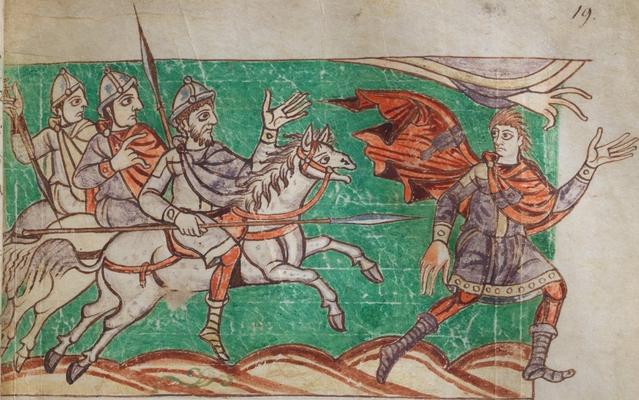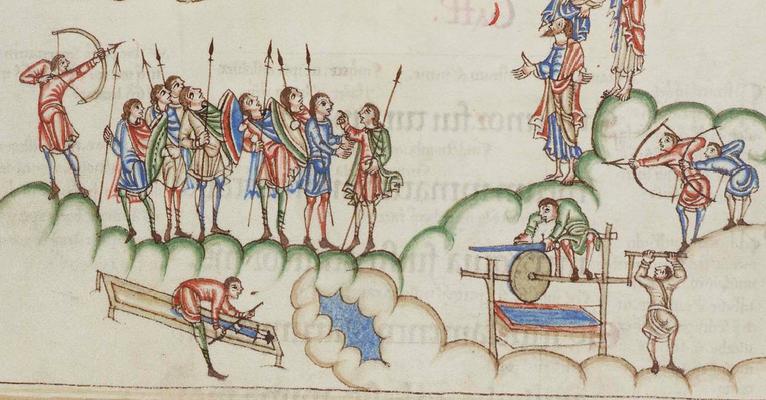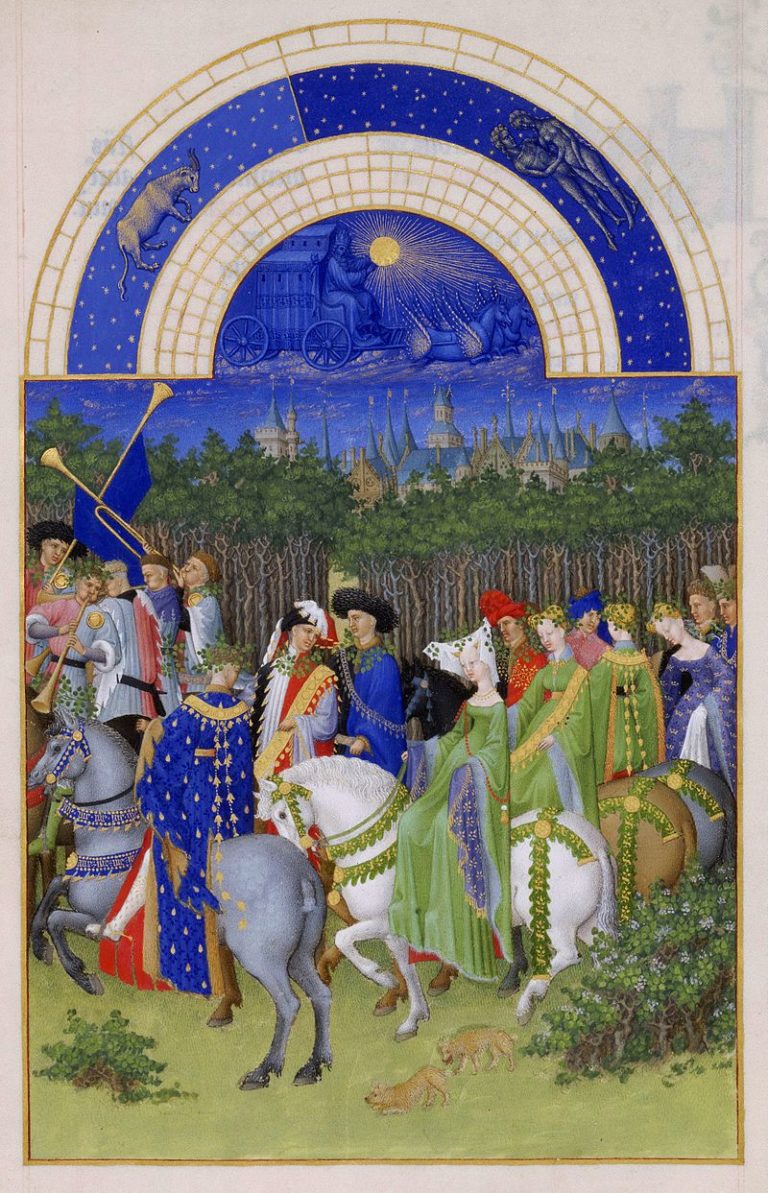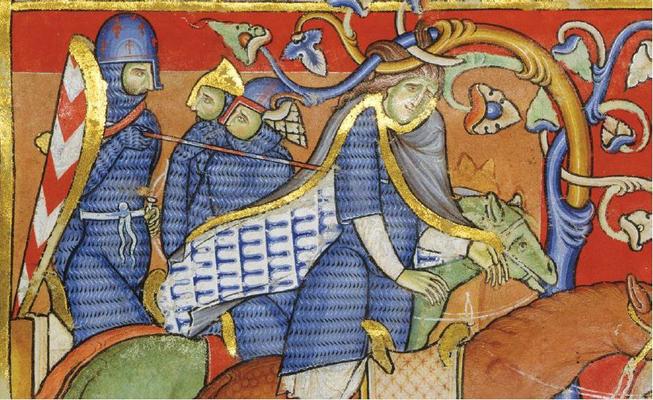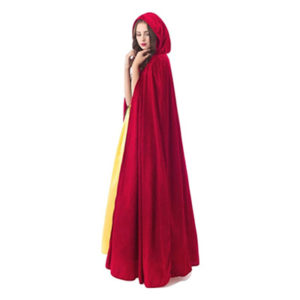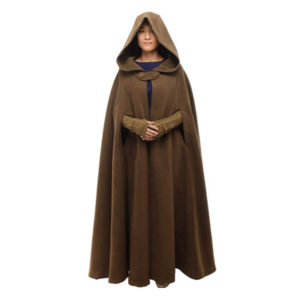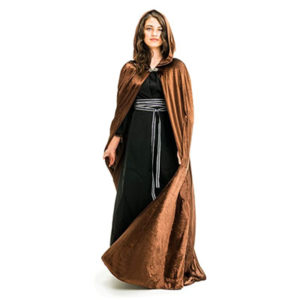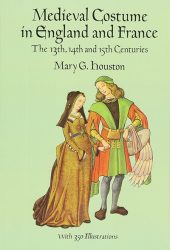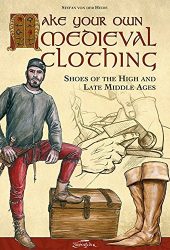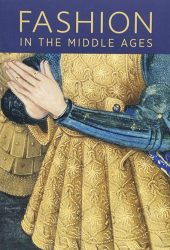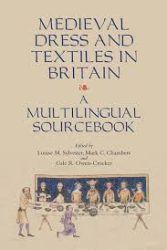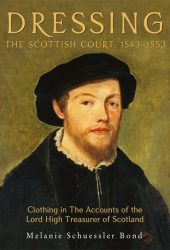The Medieval Cloak was worn over indoor clothing and protected the wearer from the cold, rain, or wind. Over time, cloak designs have been changed to match fashion and available textiles.
During the Early Anglo-Saxon period, a short, fur-lined cloak was designed so that the animal’s skin faced outward and the fur brushed against the undergarments. The cloak opened either at the front or the right shoulder and was fastened with a brooch, usually circular in shape. Cloaks could also be closed by tying, lacing, or using a clasp made of thorn, bones, wood, or horns.
The word cloak comes from Old North French cloque meaning “travelers’ cape,” literally “a bell,” due to the garment being bell-like shape.
The most popular materials for medieval cloaks were wool, silk (taffeta, damask and velvet, only for the wealthy), linen and fur. Cloaks in the middle ages could be dyed in bright colours using roots, lichen, bark, insects, and molluscs – but most garments were undyed beige and off-white.
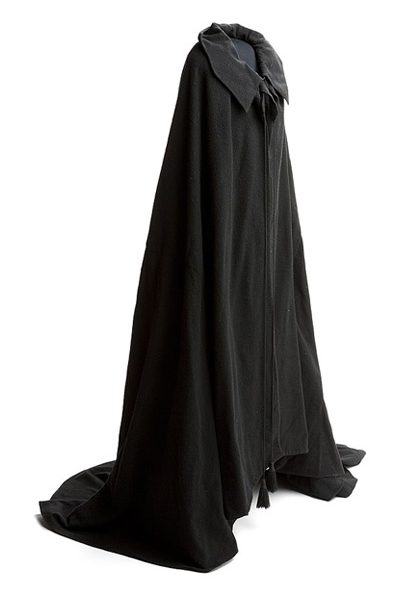
History of the Cloak
Both ancient Greek and Roman men and women wore cloaks. The Greek-styled Roman cloak, or pallium, was shaped like a square and sat on the shoulders. Romans of the Republic would wear a toga as a formal display of their citizenship, claimed to have originated with Numa Pompilius, the second king of Rome.
Cloaks used until the Renaissance were simple in design. There are very few examples of hooded cloaks in the Codex, although some cloaks were worn with separate hoods, either over or under the cloak.
The initially simple medieval cloaks became more luxurious with the arrival of new materials. The wealthy, the royals and the church made hooded cloaks, capes, tunics and more from different textiles and in a variety of bright colours. Many of these materials were introduced from Asia and new textiles were invented in Europe (for example, the Italians developed taffeta, damask and velvet and exported them across the Continent).
Timeline
1066 to 1087 A.D.
Long, semi-circular cloaks fastened with a cord or brooch. Materials used are mostly wool and coarse russet. The wealthy wear bright colours.
1087 to 1154 A.D.
The palisse, a short coat that hung below the knee is introduced from Asia. The nobility now has access to silk and finer linen and wool.
1154 to 1199 A.D.
Cloaks begin to be woven with heavier materials and can now be embroidered. Scarlet (a luxury woolen broadcloth) and watchet are added to the colour palette.
1199 to 1272 A.D.
Cloaks are no embroidered and lined with fur. Minirer-lined cloaks (a white shield-shaped fur edged with grey squirrel) become popular.
1272 to 1307 A.D.
Longer, fuller cloaks become popular. Buttons start to replace other fasteners. Serger is now used for outer garments.
1307 to 1327 A.D.
Coats of arms are now added to some cloaks. Taffeta and kersey are created, while the royalty is allowed to wear silver and gold textiles.
1327 to 1413 A.D.
Narrow cloaks fastened with silken cords become more popular. People begin wearing a wide and circular cloak and the nobility wears velvet.
1413 to 1461 A.D.
The purpose of cloaks changes. Narrow cloaks are used for court and full, hooded ones for travelling. Capes eventually fall our of fashion.
Types of Cloaks
Cloaks can be classified flexibly into:
- Button-Shoulder Cloaks: Worn exclusively by men, these cloaks were closed on the right shoulder, usually with buttons. This style of cloak seems to be the descendant of the Greek chlamys.
- Mantles: A cloak style with a center-front closure, usually with a cord attached to metal mounts. This style of the cloak is the only style that appears on women. Men used it too, in particular for ceremonies.
- Royal Cloaks: A type of fur cloak with a fur capelet. This style seems to be worn only by men and evolves in the 15th Century into a ceremonial-only garment for kings and noblemen.
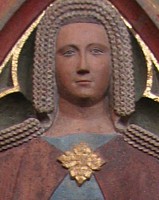
Cloak Fastenings
Most mantles seem to have been fastened across the front with a cord or two brooches. Alternatively, the cloak could be held in place by a large jewelled brooch that was costly and removable. Somtimes, cloaks had a reinforced eyelet.
Cloak Decorations
It wasn’t unusual for cloaks to be plain. When decorated, medieval cloaks could have embroidery, mottoes, or jewelled bands. Many of them, especially in the later periods, had fur trimmings and delicate linings.
Materials of Medieval Cloaks
Cloaks in the Middle Ages were mostly made of wool. Wool was a good way to protect from the cold, and was commonly available locally. Although woollen cloaks were worn by both rich and poor, the wealthy had a larger selection of fabrics, colours, and garment styles. This was especially the case after 1200 AD, when trade flourished thanks to increased stability among European cities.
The wealthier became more interested in novel outfits as a way of showing off their status and wealth. Many hats, cloaks, tunics, and gowns began to include gold and fur trims.
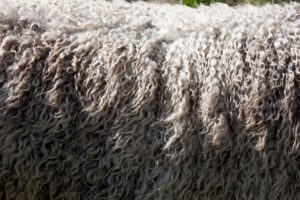
Wool
Wool was used for a variety of medieval outfits such as hooded cloaks and outer garments. Wool could be knitted or crocheted and could be made thin or thick depending on its purpose (thicker garments were warm and thin ones were delicate and light).
Scarlet
Scarlet was a luxurious woollen broadcloth tinted red. Royalty and the wealthy wore scarlet because of its bright colour and connotations of high status. The fabric was dyed with kermes.
Russet
Russet was a coarse cloth made of wool and grey or brown in colour. The material was used as a sign of humility.

Silk, Taffeta, Damask and Velvet
When Italians silk masters began working with fabrics introduced from Asia, they created me textiles such as taffeta, damask, and velvet and exported them throughout the continent. Creating silk involved a long process. Italians ere particularly skilled at it and were able to create a variety of beautiful smooth textiles.
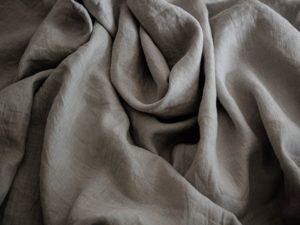
Linen
Linen was made from flax. This time-consuming and laborious process created a fabric that was both strong and delicate. It was generally used in veils, napkins, and undergarments. Because linen was more expensive than wool, it’s considered the second most popular medieval type of fabric.
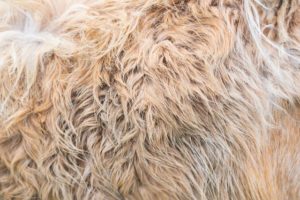
Fur
Fur was common but not particularly popular for cloaks – as it was initially considered barbarian. In time, however, fur became essential for the trimmings and lining of medieval cloaks. USed furs included fox, beaver, and squirrel. Those that could afford it could also buy ermine and marten from Asia.
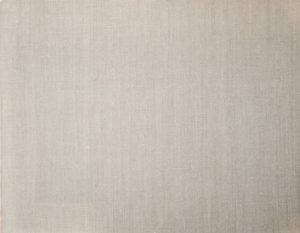
Cotton
Cotton wasn’t particularly popular in medieval times because the plant has trouble growing in cold climates. Spain and Italy, however, had a cotton industry, making it available for the European continent.
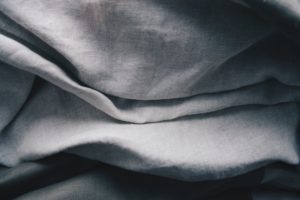
Hemp
Although hemp was mostly used to make ropes and sails, it was sometimes seen in household items like aprons and undergarments.
Image Gallery: Cloaks in Medieval Manuscripts & Art
